Subaru Crosstrek Vs Mazda CX-30 Comparison

Here comes the sun. Wait, no, it’s the bright yellow Subaru Crosstrek.
The plucky Subaru is rolling up to battle our reigning sub-compact crossover champion, the Mazda CX-30. Gifted a larger, more powerful engine for the 2021 model year, the Crosstrek impressed me on its first drive in the autumn. The 2.5-liter sweetened an already appealing package in the segment. It was clear right away: the Mazda would need to defend its crown after defeating the Kia Seltos last year.
Get a Quote on a New Subaru Crosstrek or Mazda CX-30So here we are. As managing editor Kshitij rolls up in the retina-searing Scooby, the actual sun makes a rare appearance. In the mid-afternoon light, it’s clear these two trucklets, despite similar dimensions and pricing, are two very different takes on this rapidly expanding class. Can the latest challenger topple the CX-30?
Interior and Cargo Space
Crosstrek: The Crosstrek is, essentially, an Impreza on stilts. Using such an obvious compact car base affords it more space for budding families. Like the scale after the holiday season, the numbers don’t lie: the Crosstrek out-stretches the CX-30 in every measurement bar one: rear headroom. And even then, at 38.0 inches (973 mm), it’s just 0.3 (7 mm) inches shy of the Mazda. In terms of front headroom, house legroom and shoulder room, the Scoob has the CX-30 licked. Even without the optional moonroof, it feels airier in either row. Behind the seats, there’s an ample 20.8 cubic feet (588 liters) of space for either things or canine companions. Fold the second row down and you’re up 55.8 cubes (1,565 L). Family man Kshitij also points out that the Subbie is the easier of the two to install a child seat in.
Those economy car roots do make for a more pedestrian interior, however. As your hands move lower down the dash and center console, they meet with increasingly brittle plastics. Same goes for the other side, where the door cards feel thin and flimsy. The carbon fiber trim isn’t going to fool anyone. On the plus side, the Crosstrek’s interior does feel made for the off-the-beaten-path adventures its exterior promises however, thanks to big, easy-to-use dials for climate and volume. The seats are comfortable, and come in an all-weather material unique to the Sport/Outdoor, making them easy to clean. It’s pure function over form, the Crosstrek, and that holds a certain amount of appeal for some.
CX-30: Stepping into the CX-30 feels like a whole different class of car. Mazda’s march upmarket is put in stark contrast here, with a smooth blue-and-cream color scheme that would shame an offering from German rivals costing $10k more. The CX-30’s interior is a place you genuinely enjoy spending time in. The wheel is the right size and thickness—I’d go so far as saying Mazda makes the best steering wheels of any mainstream brand—and the seats are more supportive than the perches in the Crosstrek. There are a few ergonomic foibles, though. The sliver of metal across the dash partially obscures the handful of physical buttons below it for the driver. The volume knob, located down and to the right of the shifter, is also an odd one, more so for passengers than the driver, who has wheel-mounted controls.
It’s a small feature, but I love the soft fade of the turn signal repeaters, both on the instrument panel and the taillights. It’s a nice touch that adds to the calm within the Mazda.
SEE ALSO: 2021 Subaru Crosstrek Review: First DriveAs we covered in the CX-30’s last comparison, the lux-feeling cabin does place a premium on space. It’s not terribly noticeable from behind the wheel, but every other seat in the house is just a little more cramped than in the Crosstrek. The high shoulder line and closer C-pillar conspire to make the rear row feel tight. Cargo space is essentially a wash with the seats up, measuring 20.2 cubic feet (572 liters). The gap grows when operating in hauling mode, however: it’s just 45.2 cubes (1,280 L) with the second row folded. The hatch opening is curvier than the Crosstrek’s as well, limiting what it will swallow. Kshitij also notes child seat installation is tougher here: the seats need to be folded to remove the headrests.
Bottom Line: We’re calling this category a draw. The Crosstrek pulls an early lead when you break out the measuring tape, but its forgettable interior design and so-so material quality let the premium-feeling Mazda pull even with it. The Subaru feels built to a budget, whereas the CX-30 feels more expensive than it is.
Tech and Features
Crosstrek: The Crosstrek Sport/Outdoor comes with the larger 8.0-inch StarLink infotainment screen. It fits right in with the Crosstrek’s mission statement: function without flash. There are big, clear menu buttons, and the screen responds to inputs reasonably quickly. Should you want that familiar smartphone interface, both CarPlay and Android Auto work without a hitch.
The stacked-screen approach can be information overload at first glance, but it’s a car geek’s dream. Engage X-Mode and watch as it tells you the Crosstrek’s current angle of attack. Neat.
There are a lot of controls mounted to the Crosstrek’s wheel. “Though it looks busy, they do come in handy once you get used to them,” says Kshitij. I agree, with exception to the steering wheel heating button, tucked back below the right spoke. It’s an awkward prod, though once it’s on, it’s supremely effective. Same with the seats.
CX-30: We’re beating a deceased equine here, but the CX-30’s biggest mis-step is the 8.8-inch infotainment. Mazda has explained the lack of touchscreen capability is to minimize driver distraction. That we can get behind. Passengers will be less enthused, however. My fiancée simply gave up trying to use the central rotary dial, and would hop straight to my phone for Spotify picks. Smartphone mirroring is just as frustrating with the dial.
SEE ALSO: 2021 Kia Seltos Turbo SX Review: When Power CorruptsThe rest of the CX-30 experience is nicer. The Mazda has more powered adjustability for its driver seat, extending its lead in the comfiness category. The seat and wheel heaters are useful, but can’t match the intensity of the Crosstrek’s. Your location will determine how important that is; in a snowy Canadian field in January, the answer for us was “very.”
Bottom Line: It’s a decisive win for the Crosstrek, with a more user-friendly suite of tech. It’s here that Mazda’s minimalism goes too far: passengers should have the option to use a touchscreen.
Powertrain and Driving Feel
Crosstrek: We can’t stress enough how the 2.5-liter improves the Crosstrek experience. It produces 182 hp and 176 lb-ft of torque. Passing on the highway no longer requires a scheduled event. Around town, the Crosstrek can squirt into traffic openings with ease.
The CVT is fine enough in isolation, but the Mazda’s presence shines a spotlight on its lack of refinement. There’s a noticeable lag between the throttle pedal hitting the floor and the transmission responding, like a game of tin-can telephone. Once it does wake up, the CVT transmits more noise into the cabin. At least the CVT gives the Crosstrek the fuel economy advantage: according to the EPA, it’s good for 27 mpg city, and 34 mpg highway.
Take a more relaxed approach to making progress in the Crosstrek, however, and it’s a much better proposition. The softer suspension and thicker-sidewalled tires make for a very smooth drive. The only thing softer is the steering feel. There’s noticeably more body roll than the Mazda, but it’s just the Scooby telegraphing its moves nice and early.
When the road disappears, the Crosstrek is the clear leader too. Subaru’s all-wheel drive system is renowned for its go-anywhere ability, and the 8.7 inches (220 mm) of ground clearance gives the Crosstrek surprising amounts of off-road talent. X-Mode goes one further, adapting the engine output, transmission, and torque split to provide even more security in low-grip conditions.
CX-30: The CX-30 is easily the driver’s choice not just of this face-off, but of the class. It rides with a deftness the Subaru can’t match, though the added firmness, however slight, may be less appealing to passengers. The six-speed auto is a smooth operator, so much so that you won’t miss the extra gears other self-shifters offer. The 2.5-liter is marginally more powerful than the Scooby’s, at 186 horsepower and the same figure for torque. The Mazda feels quicker though, likely due to the transmission.
The Mazda’s smooth, leather-wrapped wheel offers more feedback and weight. Point the CX-30 into a corner, and it maintains composure for longer, refusing to lean heavily on its outside front wheel. “You can feel the suspension working on surfaces,” says Kshitij, giving the CX-30 high marks for mid-corner stability. We both agree the CX-30 feels more planted; the Crosstrek, more isolated.
Neither car is what we’d call whisper-quiet on the highway, but the Mazda is the marginally less noisy of the two. It is, however, also thirstier: it scores 25 mpg and 33 mpg for the city and highway, respectively.
Bottom Line: On the road? Mazda, of course. Do you regularly head off road? Are you being honest? Then it’s the Subaru. We’re wagering most buyers will be spending far more time on tarmac than off though, so it’s the Mazda which gets the nod here.
Safety
Crosstrek: Subaru’s EyeSight system of driver assists is standard on every CVT-equipped Crosstrek. It includes lane keep assist, automated emergency braking, and adaptive cruise control with lane centering. We found the latter quite good, though the system’s insistence on staying the course can cause it to over-correct any user inputs. Blind spot monitoring and rear cross-traffic alert are optional on the tested trim (standard in Canada), and standard on the Limited. On that top trim, Subaru offers automated rear braking, something not available on the Mazda.
The NHTSA rates the 2021 Subaru Crosstrek at four stars for frontal impacts, and five for side impacts. The IIHS rates it a Top Safety Pick.
CX-30: Like the Subaru, the CX-30 includes adaptive cruise control, lane keep assist, and automated emergency braking on every automatic-transmission model (read: all of them). It also includes high beam assist (only available on the Crosstrek Limited). Blind spot monitoring and rear cross-traffic alert are included from the Select trim onward.
Once again, Mazda Canada does its own thing: the base GX drops the smart cruise, lane-keep, and emergency braking, but includes the blind spot monitoring and RCTA. You’ll have to graduate to the mid-level GS to add the safety tech all back in. We found the cruise control more natural in the CX-30, though its blind spot system beeped more false positives than we’d like.
The NHTSA gave the CX-30 a full five stars in both frontal and side impacts, while the IIHS rates it a Top Safety Pick+.
Bottom Line: Both of these little family CUVs come with an impressive amount of standard safety tech—well, other than the base manual Crosstrek, or the Canadian CX-30 GX. The Mazda earns the higher safety ratings from the NHTSA and IIHS, however, so it wins this round.
Styling
Crosstrek: Like we’ve said above, it’s a lifted, butched-up Impreza. That might seem overkill for a cute-ute, but the Scooby’s decent off-road abilities back up the promises that plastic cladding makes. It looks made for adventures beyond a simple road trip. As Kshitij puts it: “honestly, the look seems incomplete without a surfboard on its roof.”
We’re fans of daring color choices here at AutoGuide, and while we think there’s a little too much green in the mix for the Crosstrek’s paint, we’d rather Subaru offered the bright hue than didn’t.
CX-30: Want to talk gratuitous plastic cladding? That’d be the CX-30. The contrast helps pull some visual weight out of the wheel arches, but don’t be fooled: the CX-30 is far more road-biased than its fellow countryman.
It’s a very pretty vehicle though, and familiarity hasn’t diminished that. Kshitij calls it a “fine line between subtlety and elegance,” and that sounds about right. There are other colors available on the CX-30, but neither of us can understand why anybody would turn down Soul Red.
Bottom Line: We both like the CX-30’s pert, urban-oriented styling more. But as ever, we’re not scoring this one, since aesthetics are subjective.
Pricing
Crosstrek: For 2021, the base MSRP of a Subaru Crosstrek is $23,295. That includes AWD—an option on the CX-30—but the CVT will run you another $1,350 ($2,000 CAD). The Sport (or Outdoor in Canuck-speak), the cheapest way into the 2.5-liter model, has a $27,545 asking price ($31,795 CAD). A $1,600 option package adds the larger 8.0-inch infotainment screen and a moonroof; our Canadian-spec tester eschews the latter.
Want the top of the (non-hybrid) Crosstrek ladder? That’ll be the Limited, costing $31,440 including the $2,395 option package adding the moonroof and larger infotainment. The Canadian Crosstrek Limited sticker, which rolls those features into the list price, is $36,295 CAD.
CX-30: The Mazda lineup is quite different depending on which side of the border you reside on, so we’re going to break ’em down separately.
In the US, the CX-30 range kicks off at an even $23,000 for a base-level S trim, including destination. That scores you the 2.5-liter engine, but you’ll need to cough up an extra $1,400 more if you want AWD. Our tester is roughly equivalent to the CX-30 Preferred AWD trim, which goes for $28,800. Beyond that, there’s the Premium, at $29,650 for the front-drive version. A new turbocharged model slots in at the top of the CX-30 lineup for 2021.
Canada’s CX-30 lineup begins at $26,500 CAD for the front-drive GX, which packs Mazda’s smaller 2.0-liter engine. You’ll need an extra $2,800 CAD to select the 2.5-liter, and $1,500 CAD more for AWD. Our tester is this mid-level GS trim, with the $1,900 CAD Luxury Package added on. Total damage? $33,150 CAD, including destination. The top-shelf GT, the Northern equivalent of the Premium, runs to $35,800 CAD.
Mazda’s brilliant Soul Red tacks an extra $595 ($450 CAD) onto the bottom line.
Bottom Line: The Subaru is the pragmatists choice if you’re eyeing the lower trims, especially as one of the few in the segment to offer standard AWD. It offers a lot of bang for the buck. As you move closer to the top of their respective trim ladders, however, the Mazda more easily justifies the added expense thanks to its premium feel.
On paper, the Crosstrek is the more affordable choice in this particular trim match, at least north of the border. It’s a different story in the US, where the must-have larger infotainment screen and blind-spot monitoring with rear cross-traffic alert are tied to the moonroof add-on, pushing the Crosstrek to $29,145, or $345 more than the Mazda. Point to Hiroshima.
Verdict: 2021 Subaru Crosstrek vs 2021 Mazda CX-30
As the week went on, the Crosstrek nipped ever closer at the CX-30’s heels. It’s not what you’d call a good first-impressions car: no, the Crosstrek has a slow-burn appeal, seamlessly slotting itself into your everyday life with zero muss or fuss. It’s roomier, it comes with a solid suite of easy-to-use tech, and it’s the softer highway mile muncher. When the tarmac disappears, we’d pick the Crosstrek every time, too.
But it wasn’t enough to swipe the crown. The new engine improves the package, but the CVT is still the Crosstrek’s weak link. The transmission can’t match the CX-30’s crisp auto, and it turns the Crosstrek into a veritable buzz-box when you ask for every pony.
Conversely, The Mazda CX-30 is a quality item, with a smooth ride, charming dynamic profile, and the best interior in the class. It’s a tighter fit, but once you’re inside, you’ll appreciate the ambience. Even the fiddly infotainment can’t ruin that.
If you’re regularly finding yourself on camping trails and want an efficient compact ute to handle the task, the Crosstrek is the choice. For the rest of life’s duties, however, our vote (still) goes to the CX-30.
Become an AutoGuide insider. Get the latest from the automotive world first by subscribing to our newsletter here.

Kyle began his automotive obsession before he even started school, courtesy of a remote control Porsche and various LEGO sets. He later studied advertising and graphic design at Humber College, which led him to writing about cars (both real and digital). He is now a proud member of the Automobile Journalists Association of Canada (AJAC), where he was the Journalist of the Year runner-up for 2021.
More by Kyle Patrick



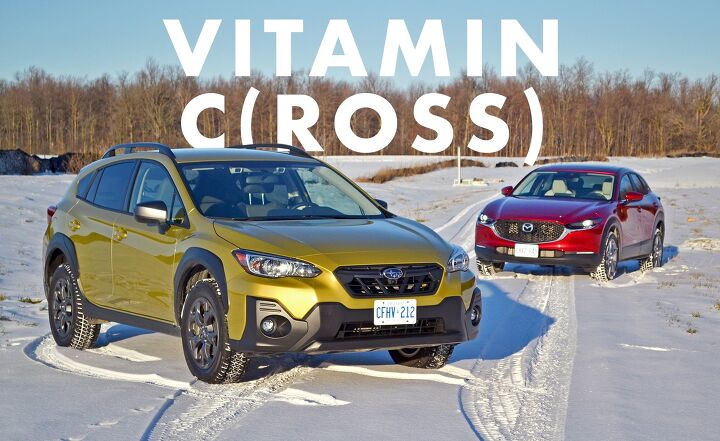




























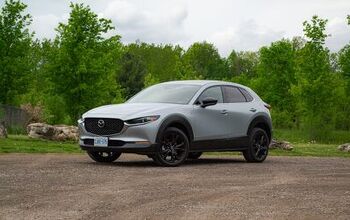

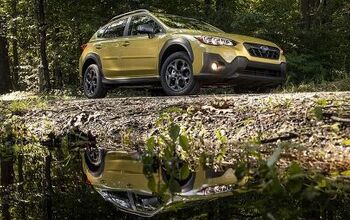


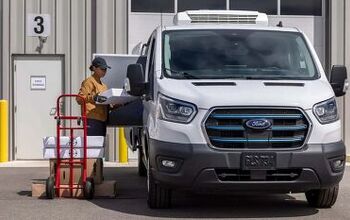
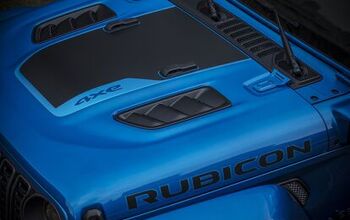
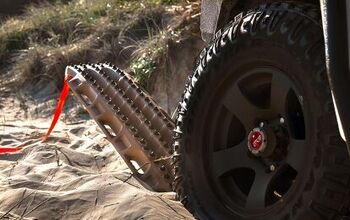

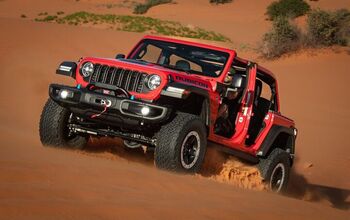
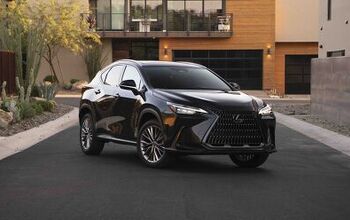

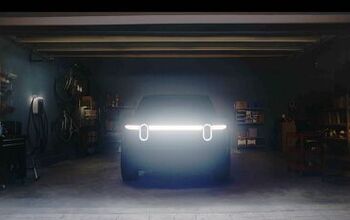


Comments
Join the conversation
looking for a 2020-2021
Idk what you were driving but I was in a cx30 and it drove worse than model t flipping over a mountain. 1 small pot hole and the transmission was slipping, the knob to the screen was broke which broke in the detail shop, accelerating... 0-60 in 10-15 business days, the salesman I made ride with me started getting nervous and sweating, this was a mazda dealership and it was pre owned certified, clean carfax, as well as other papers they showed me and it only 7,300 miles on it. Which the reason I found this page.. I chose a crosstrek and it performs as if we were comparing, soap box derby car(Mazda) vs volvo s80 t6 awd(crosstrek) The cvt has already been figured out and it's not like the beginning of cvt when they failed like a Hyundai/Kia GDi Motor that had over 370,000 recalled just in the Kia soul alone.